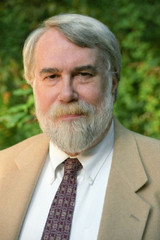|
Back
Rock and (two sets of drum) Rolls New York
Avery Fisher Hall, Lincoln Center
10/09/2014 - & October 10*, 11, 14, 2014
Christopher Rouse: Thunderstuck (World Premiere)
Josef Haydn: Symphony Number 103 “Drum Roll”
Johannes Brahms: Violin Concerto, opus 77
Lisa Batiashvili (Violin)
New York Philharmonic Orchestra, Alan Gilbert (Music Director/Conductor)

L. Batiashvili (© Courtesy of the Artist)
A noted European critic once expressed distaste for Lisa Batiashvili. “Oh, she’s good,” said the critic, “but, well, she just puts far too much into the music.”
That was supposedly a criticism. But when the great Georgian fiddler took our her Guarneri del Gesù for a singular performance of Brahms’ Violin Concerto last night, she put not only “too much” into it, but as much as could possibly be achieved.
This was the second year in a row that Ms. Batiashvili played the Brahms, though I missed her performance with the Staatskapelle. Here, her tone was more than pure, it was luscious, consoling, adoring. In the first movement, conductor Alan Gilbert let Ms. Batiashvili have her way. During the two intervals of usually insignificant solos, he literally stopped the orchestra and allowed her to play with as much living rubato as possible.
It was her movement, all the way, even to the cadenza–one of several dozen written for this Concerto. The Busoni cadenza was not all violin. Like the preceding Haydn Symphony, it began with a drum roll, though the violinist sailed through the rest of the complexities.
The second movement could have been extremely beautiful, for Ms. Batiashvili has spoken about her interpretation as a Brahms love letter. If only Mr. Gilbert had seen it this way, He allowed the orchestra solos to cut through her playing as if they were bored with her playing, like teenagers bored with the “love-part” of an exciting movie. Had they softened their comments, one would have heard the violinist’s solo.
No problem with the finale. Maybe Brahms would have asked them to slow down, to let those Hungarian dances to dance more. But nobody objected, since Ms. Batiashvili had so much enjoyment, her singing tone happily vying with her passion to the last small mini-cadenza.

C. Rouse (© Jeffrey Herman)
The opening piece, Thunderstuck (New York Philharmonic Commission) by the Phil’s composer-in-residence, Christopher Rouse, does for rock what Paul Whiteman did for jazz. Tame it and domesticate it.
Mr. Rouse has the chops (no, that’s jazz, but never mind) for “symphosizing” it, or (in the composer’s words) “reflect my continuing love of the popular music of my younger years”. He was a rock performer, has taught rock at Eastman School of music, uses pop music in many of his scores and obviously knows that of which he writes. He had the right ingredients too. A trap set of drums which set the rhythms, a brash brassy section, jagged rhythms...
But rock, like jazz, feeds on more than music. And alas, the symphonic version of “sex and drugs” were omitted, as well as the danger. I have no doubt that Mr. Rouse in his youth was a very dangerous musician. But with fame, education and experience, his creation was merely neat, light, and, as always massively colored. It was hardly a paean to a great art form.
Thunderstuck was certainly not as mawkish as, say symphonic Beatles, but Mr. Rouse’s genius in orchestration was perhaps a detriment to the music. It was probably quite civilized fun, but the music he was augmenting, specifically Jay Ferguson’s 1978 Thunder Island, had an originality and an era which can’t be duplicated.
In these same program notes, Mr. Rouse longs for “a little more fun” at classical music concerts. That was supplied...er, though not so much “fun” as wit and irony, the following Haydn “Drum Roll” Symphony.
Mr. Gilbert had restrained merriment with it too. The opening drumroll is often a mutter, but Mr. Gilbert gave it a fortissimo-pianissimo dynamic (and in the repeat, he played it the opposite way), The second movement variations were imaginative, diverse, ranging from the military to the mundane, and had a splendid solo by Concertmaster Sheryl Stapes.
(Incidentally, the Croatian themes were the Germanic opposite of the more Asian Serbian music played by the Belgrade Symphony Thursday evening, showing once again how “Yugoslavia” was an artificial creation bound for tragedy.)
That audacious third movement theme was echoed by Haydn with some tiny solos–Haydn’s example of elephant and mouse. The finale was taken with Mr. Gilbert’s breathless dash.
It wasn’t rock ‘n’ roll, but, within its framework, it was a series of 18th Century coffeehouse bons mots.
Harry Rolnick
|